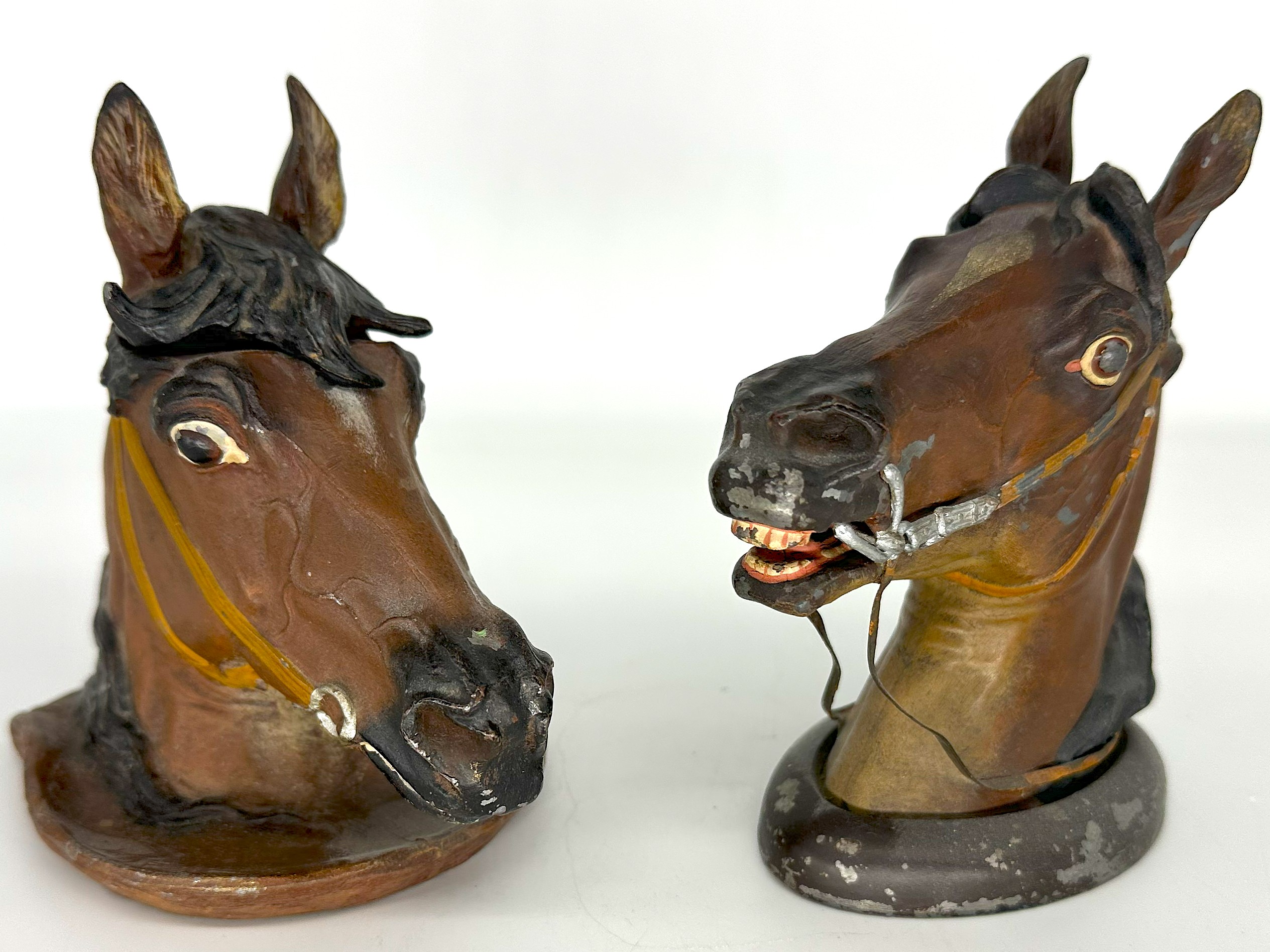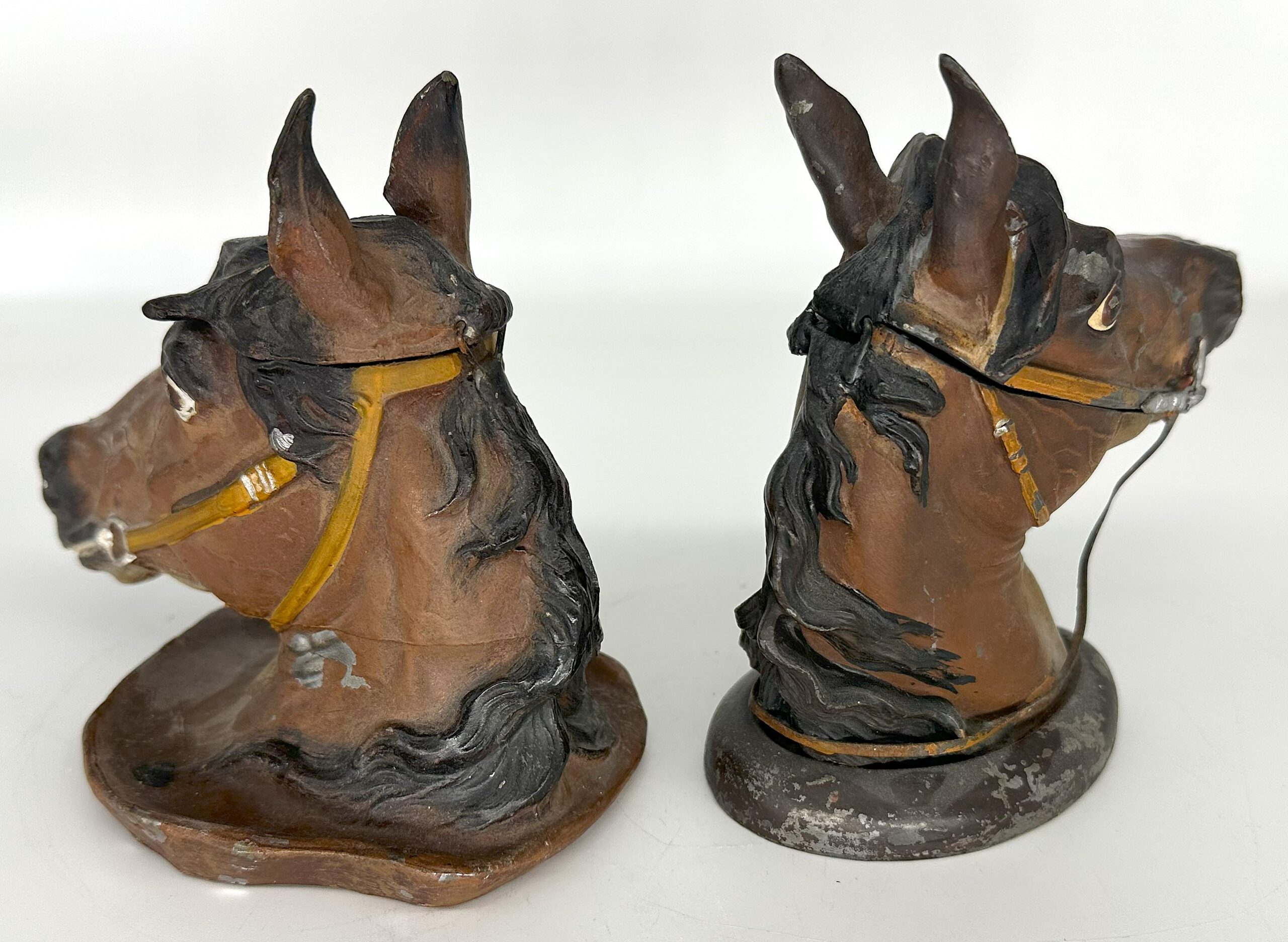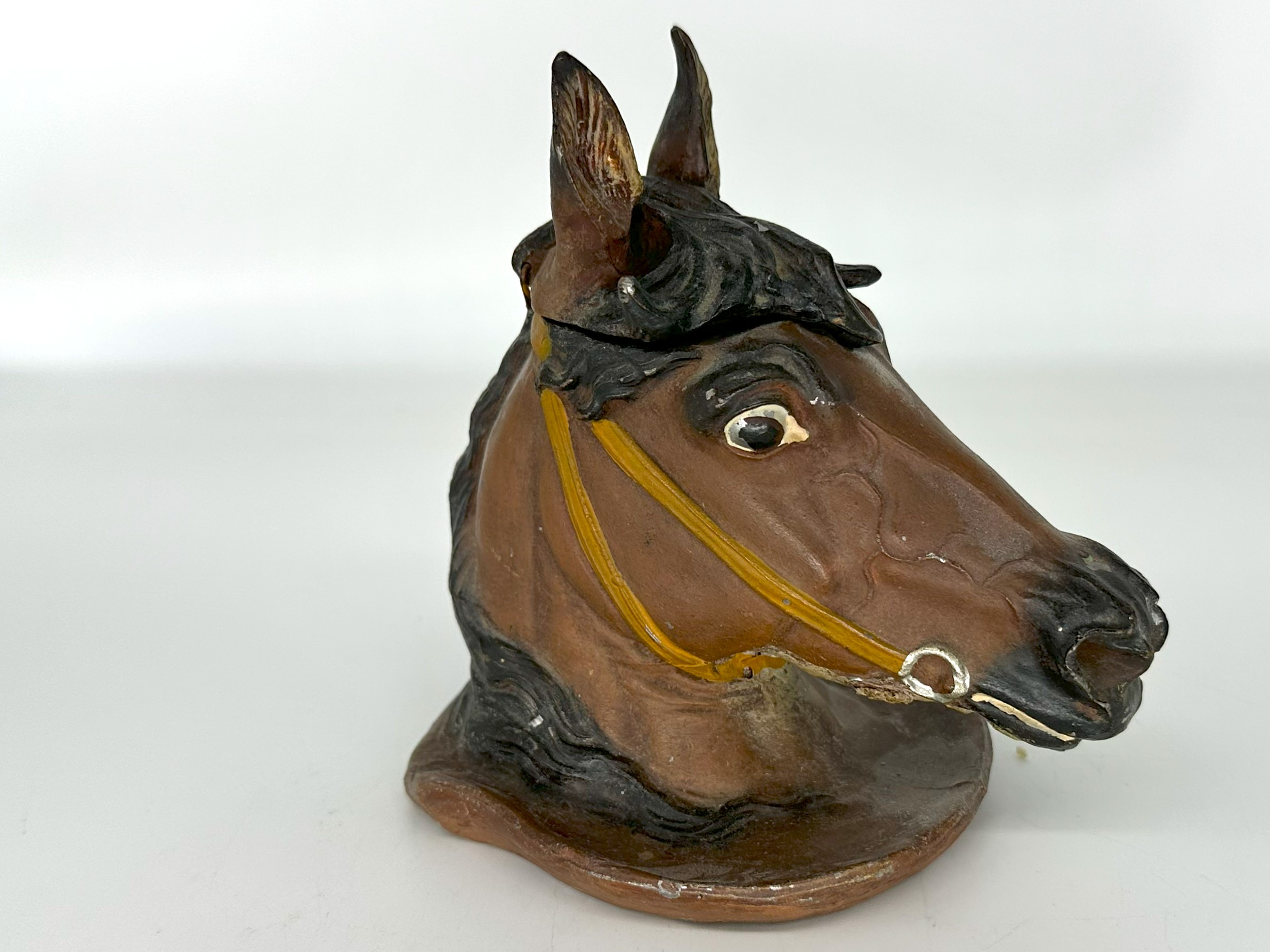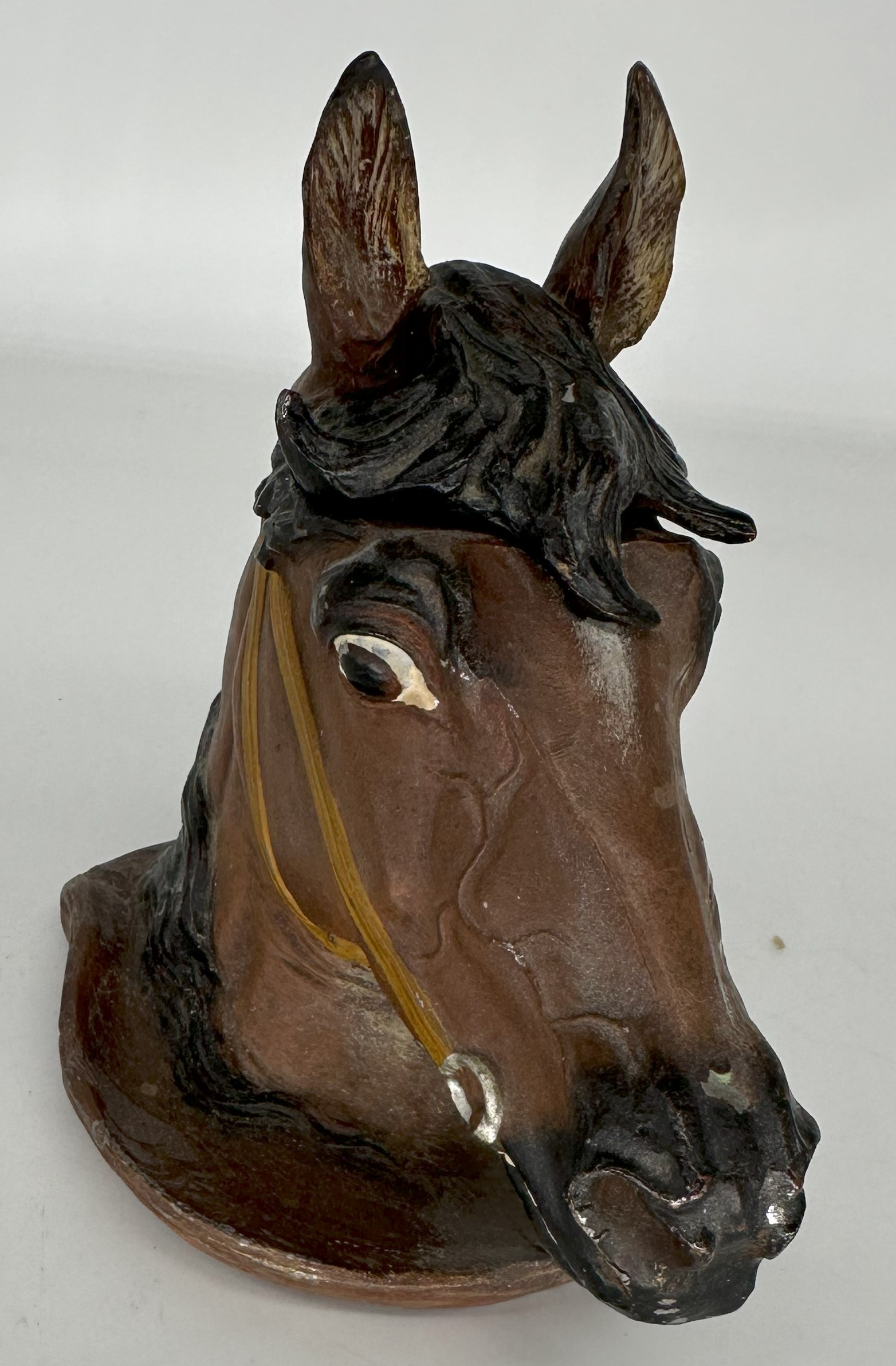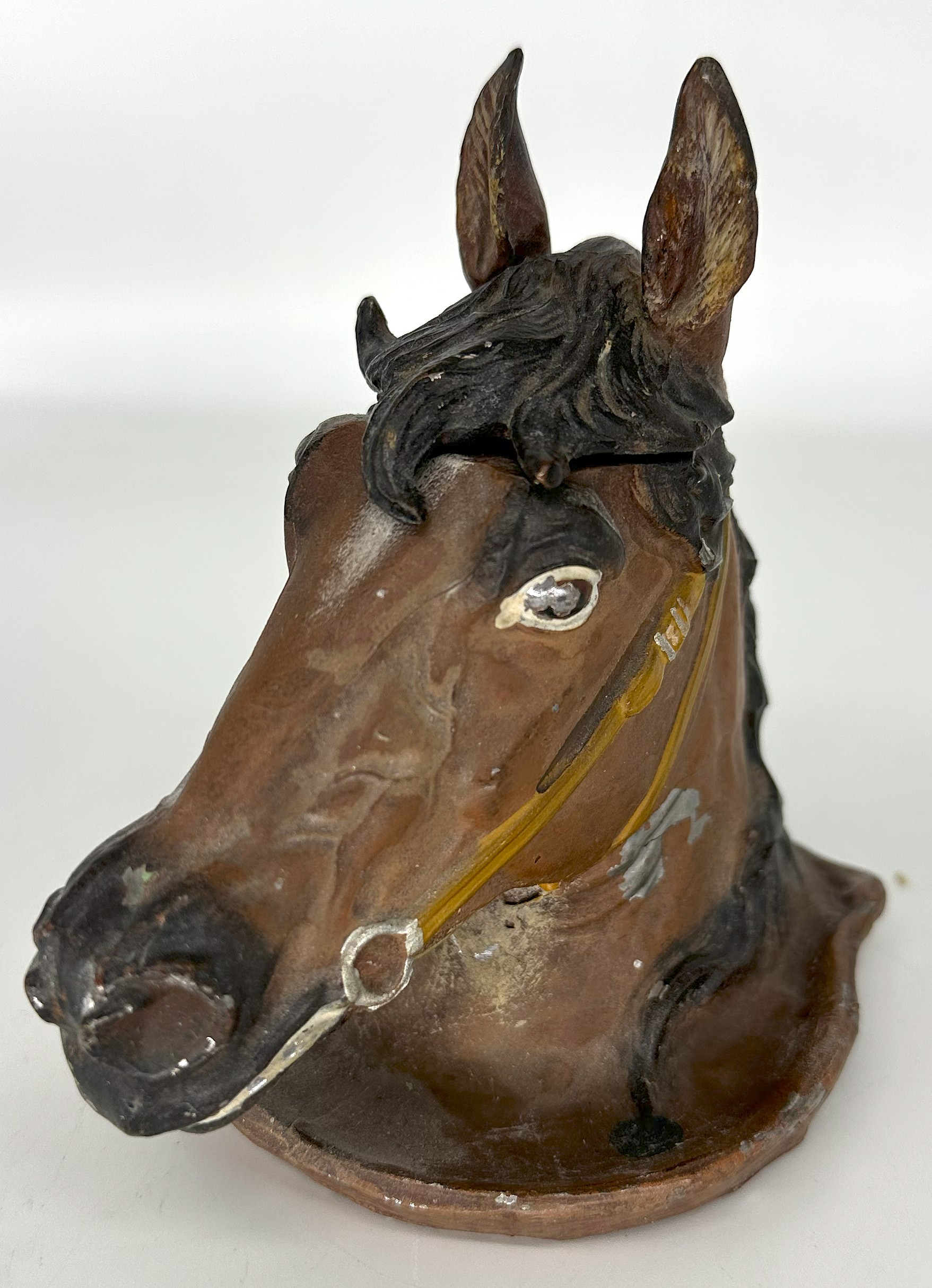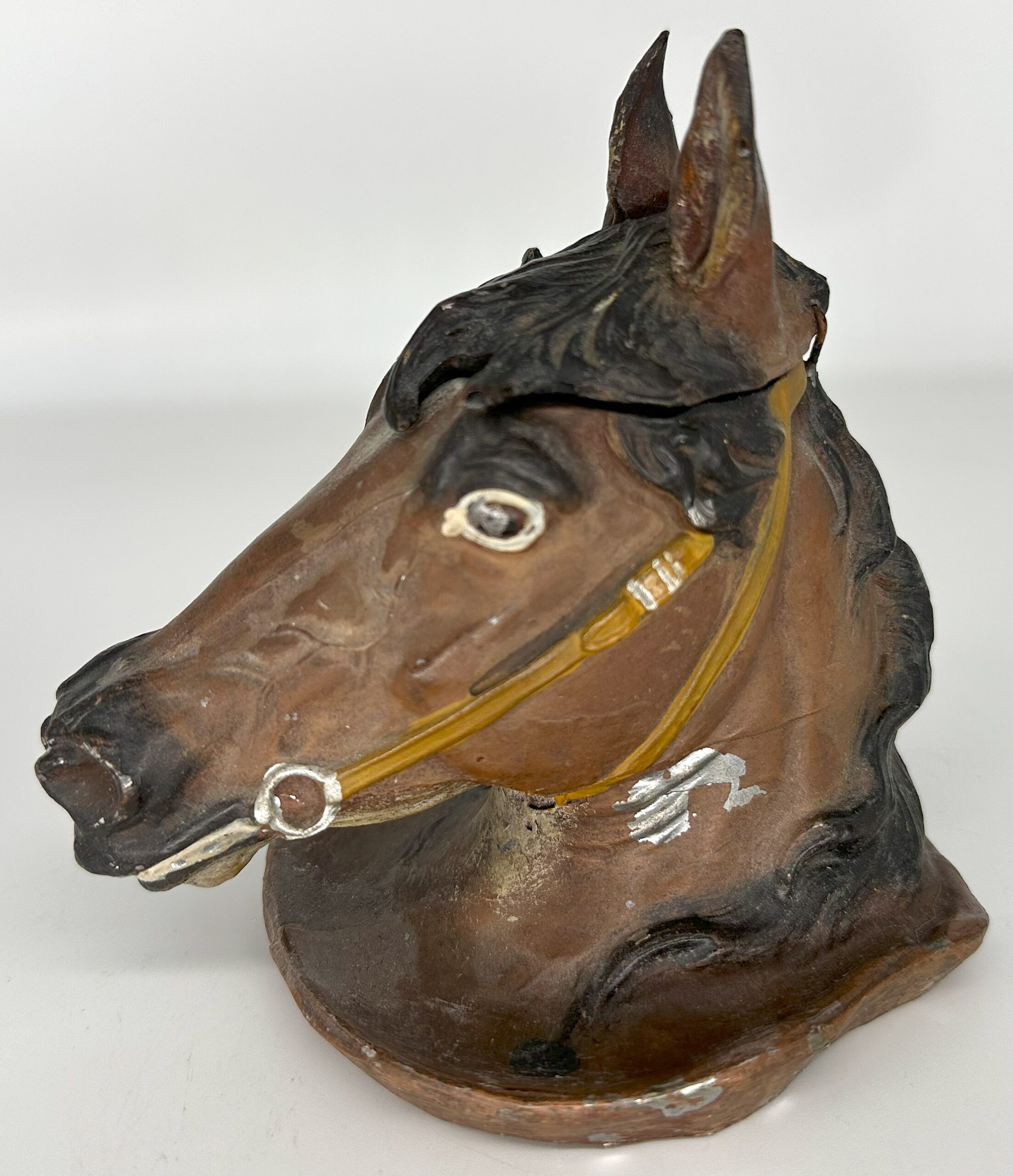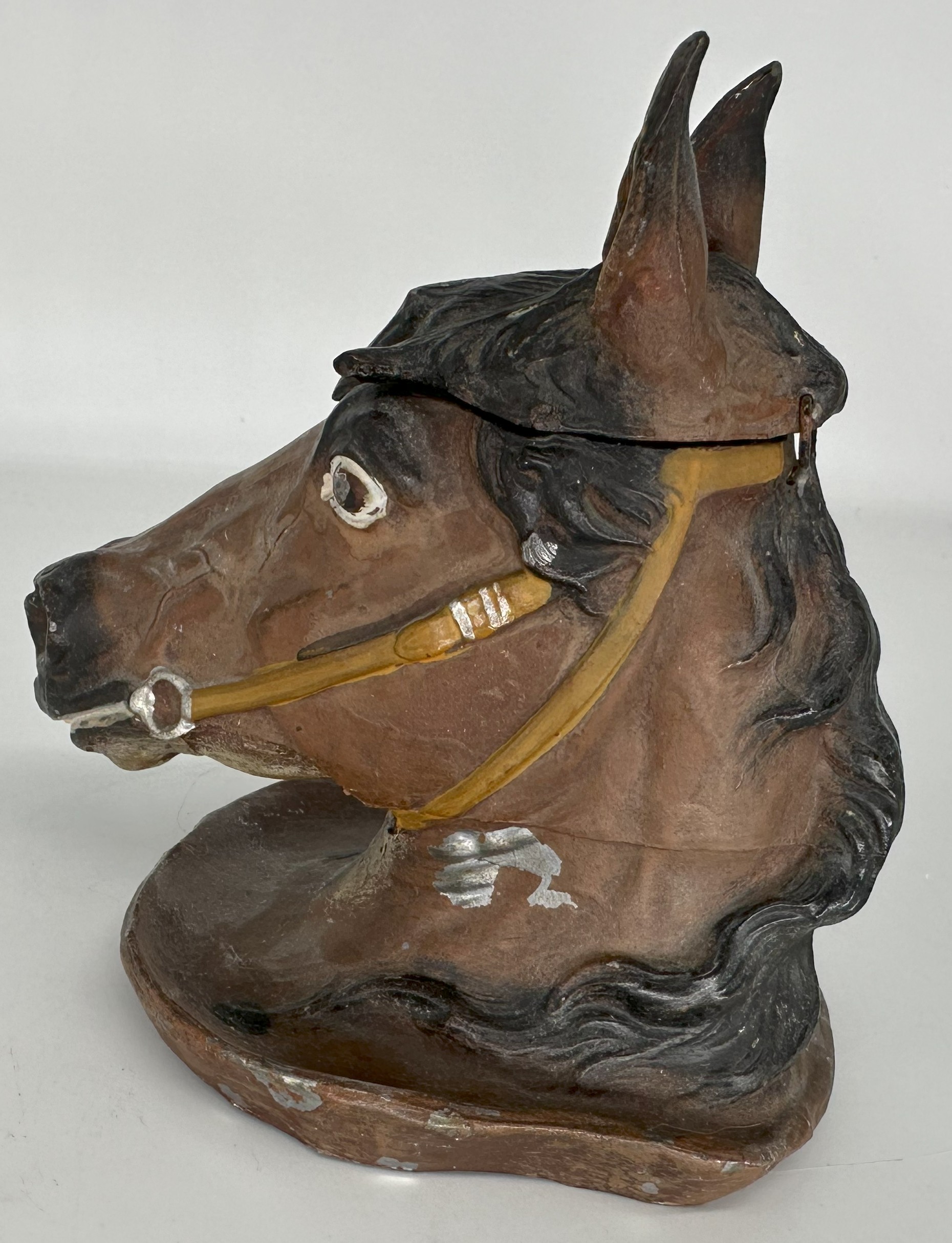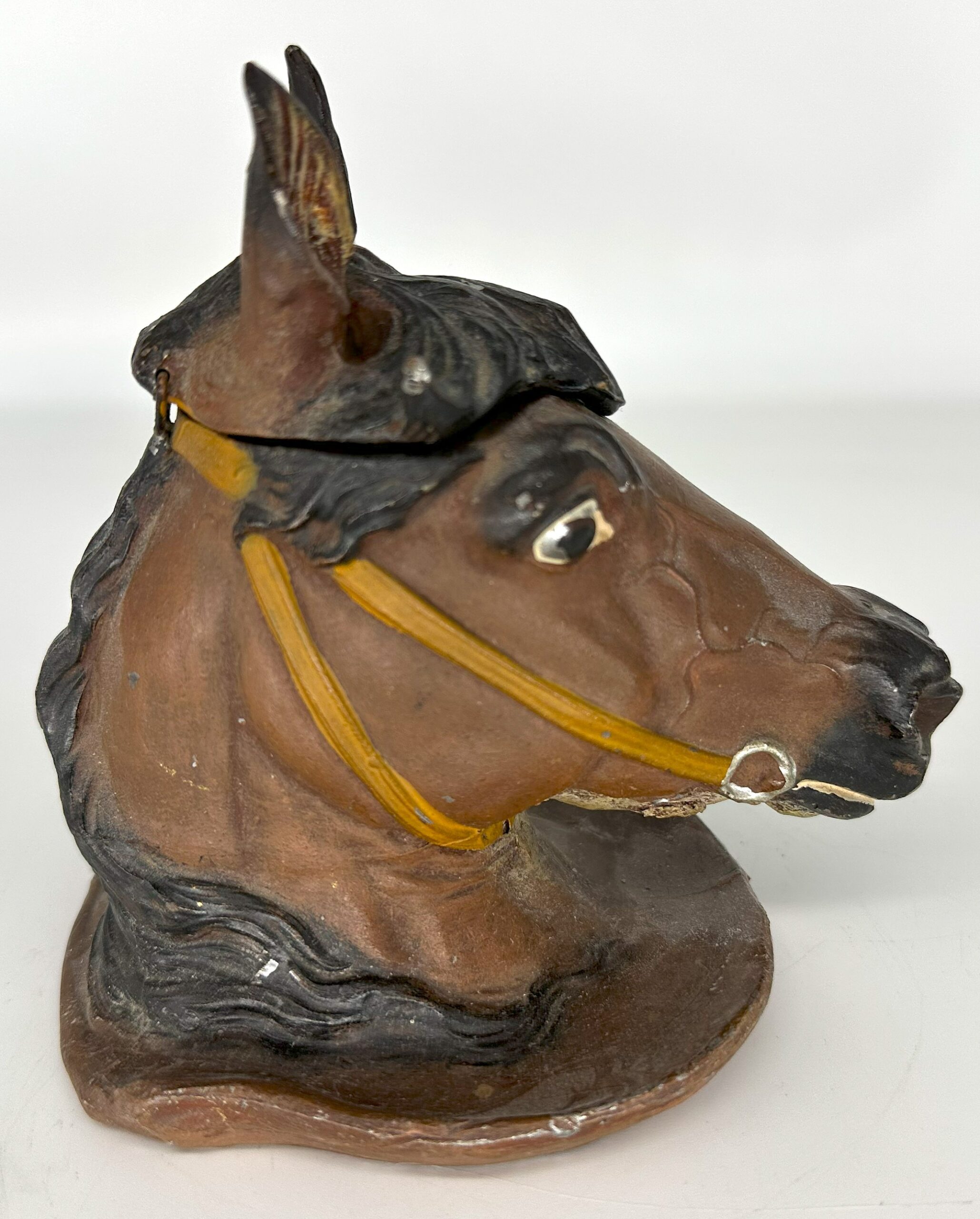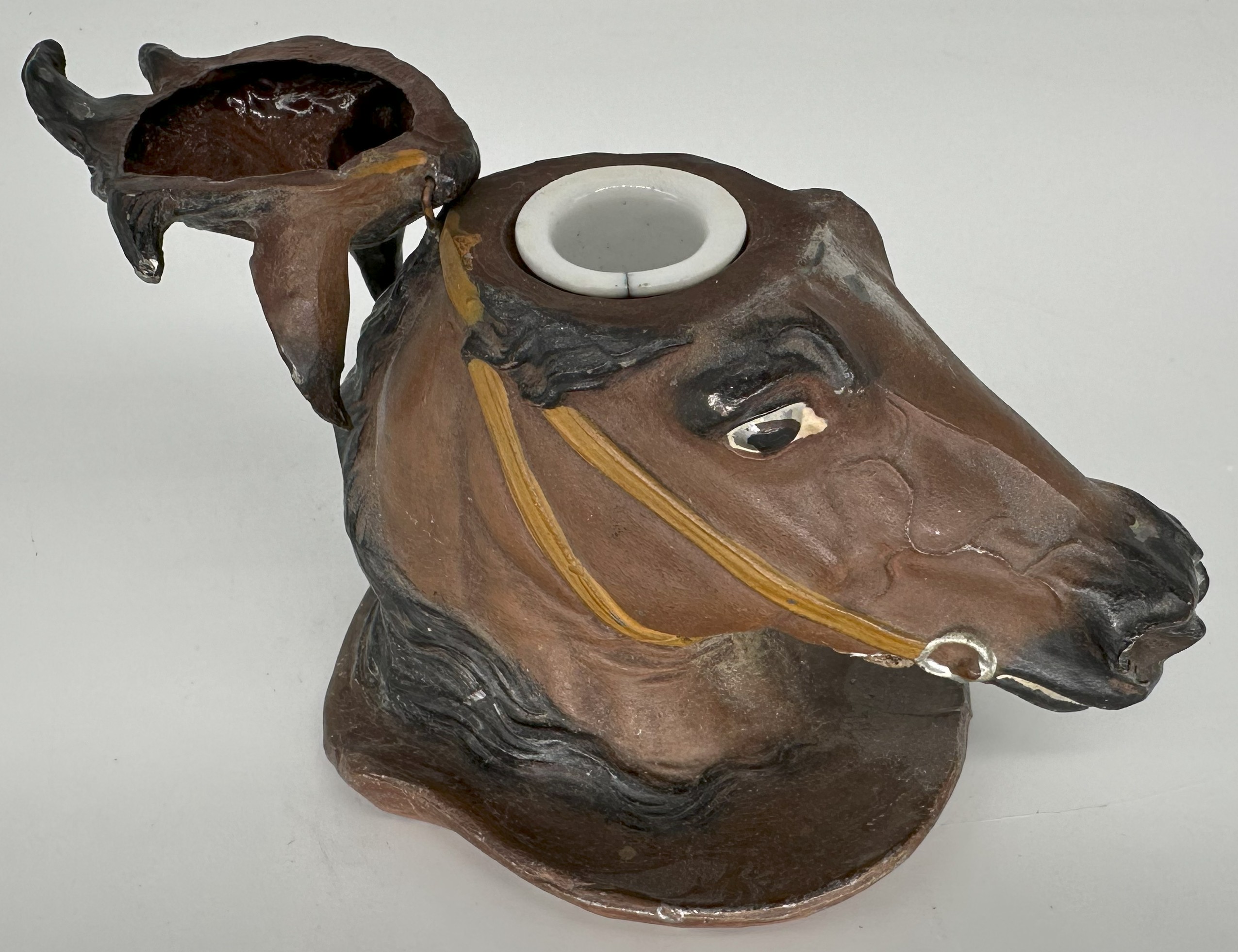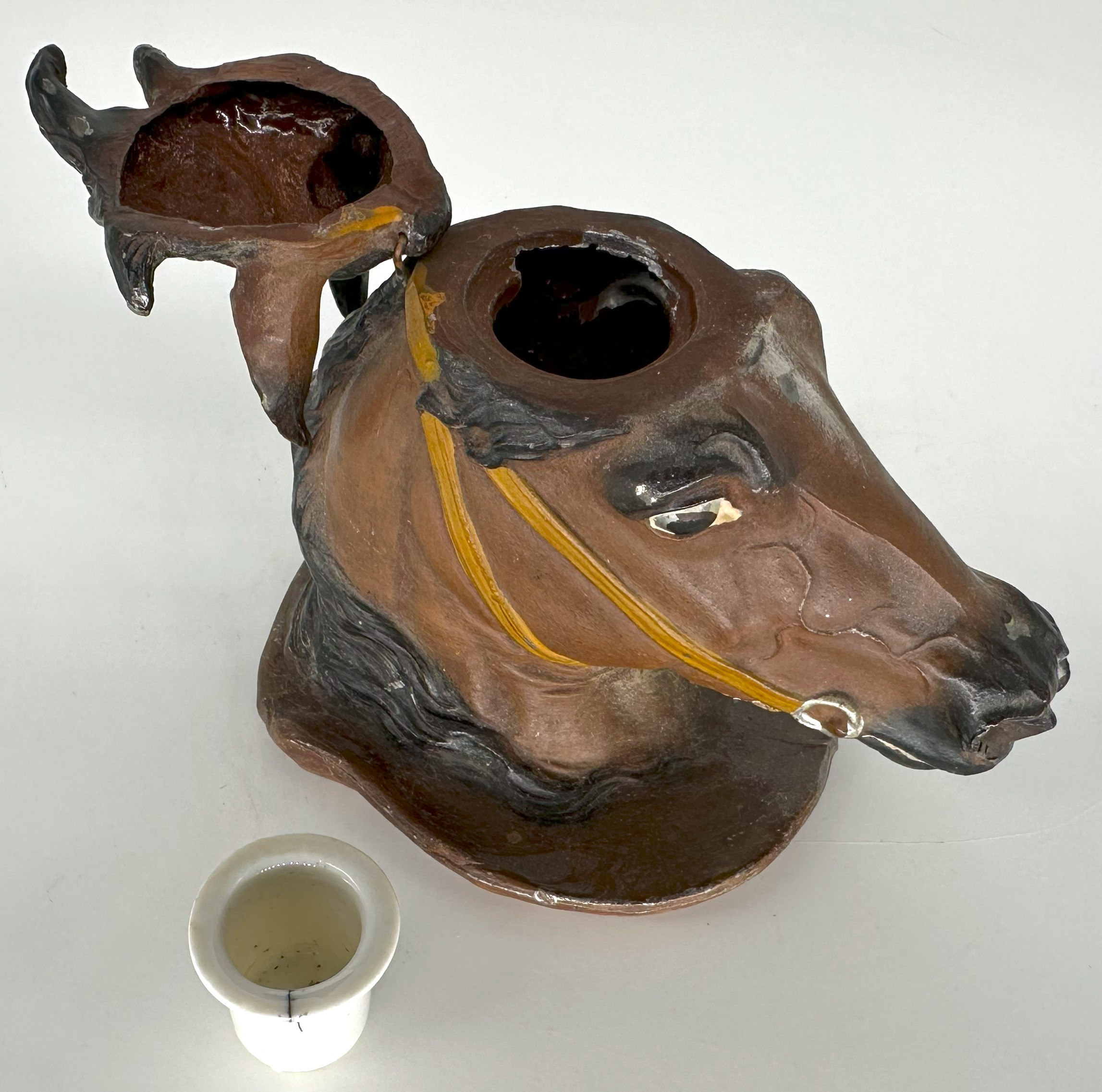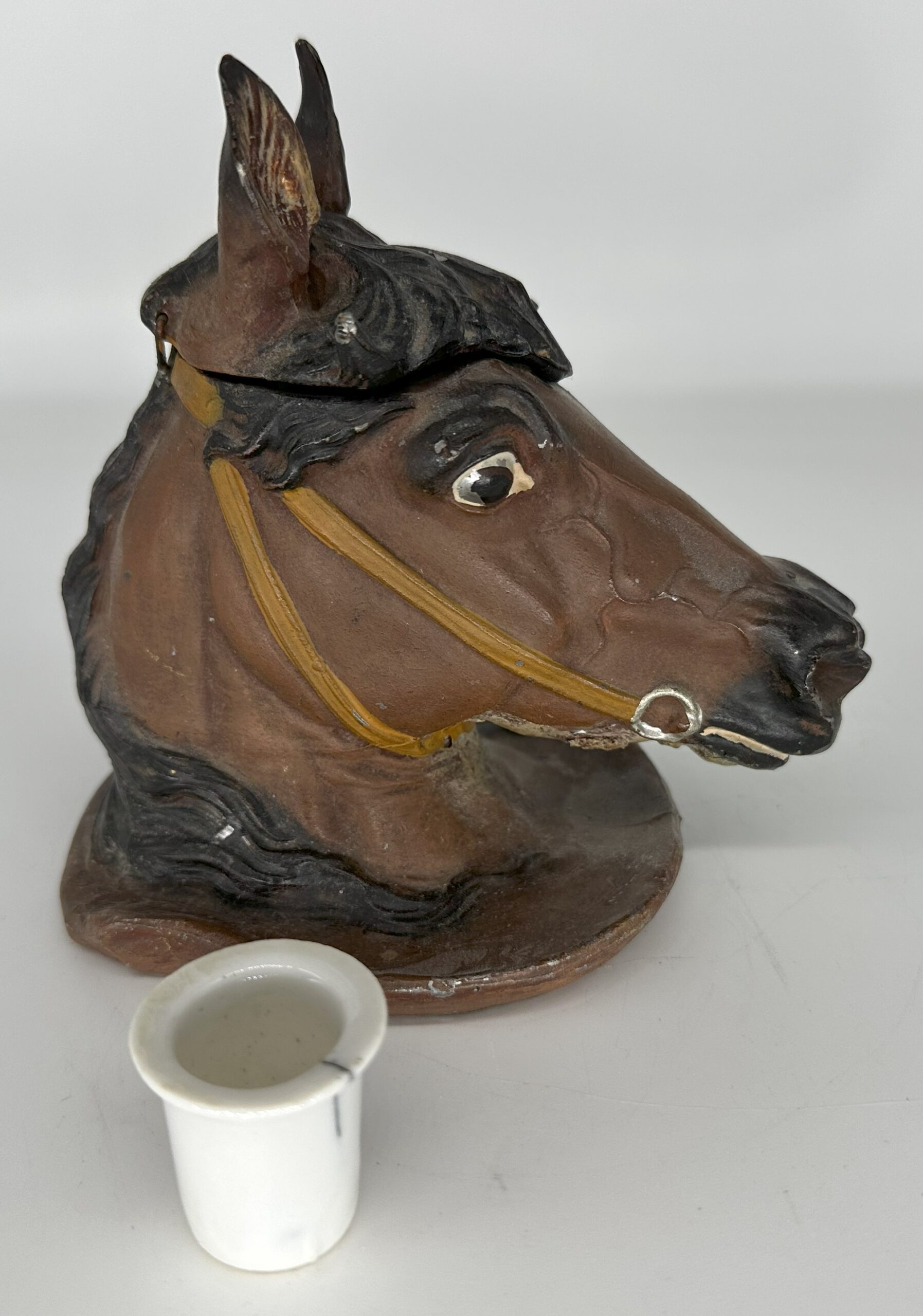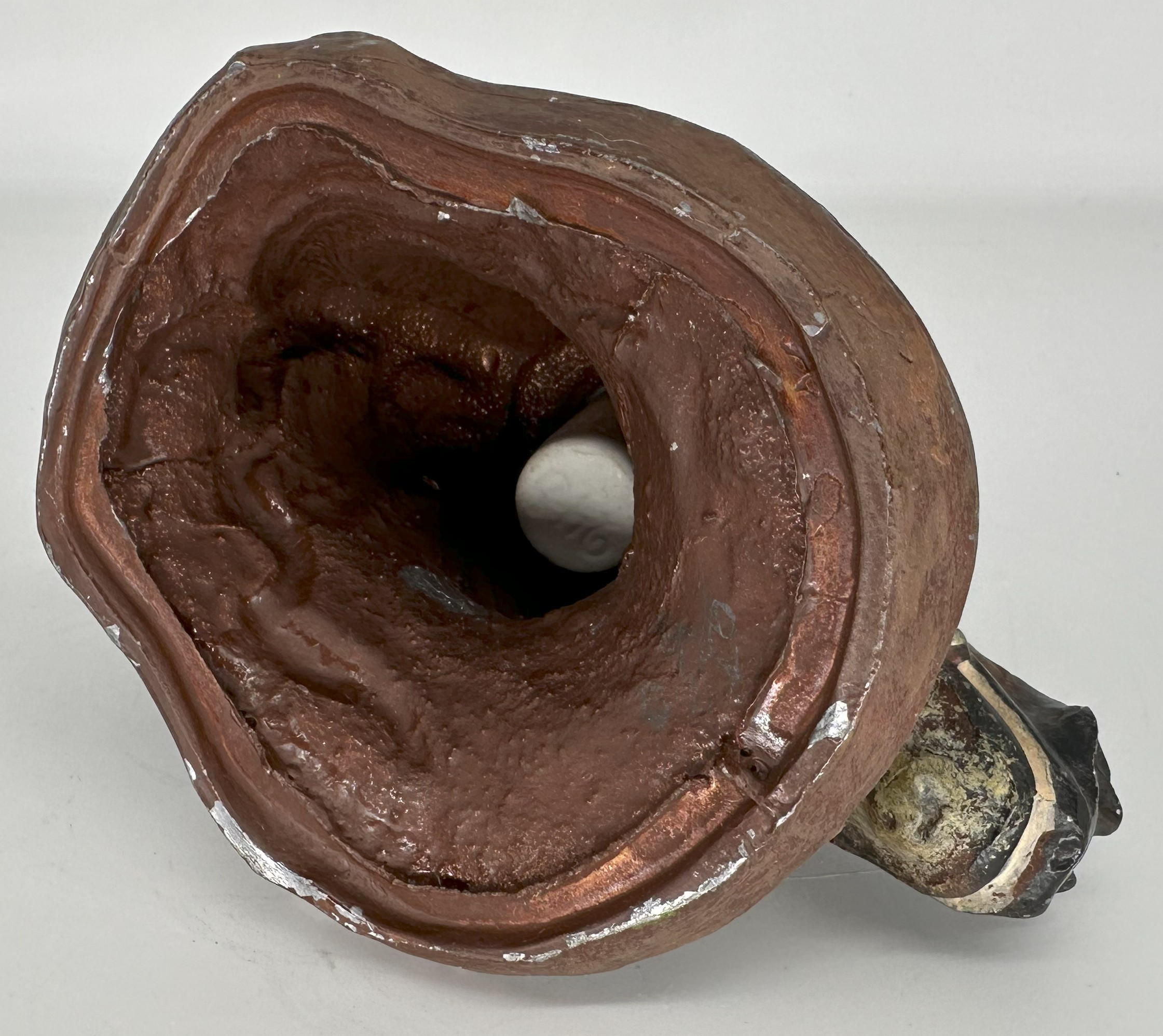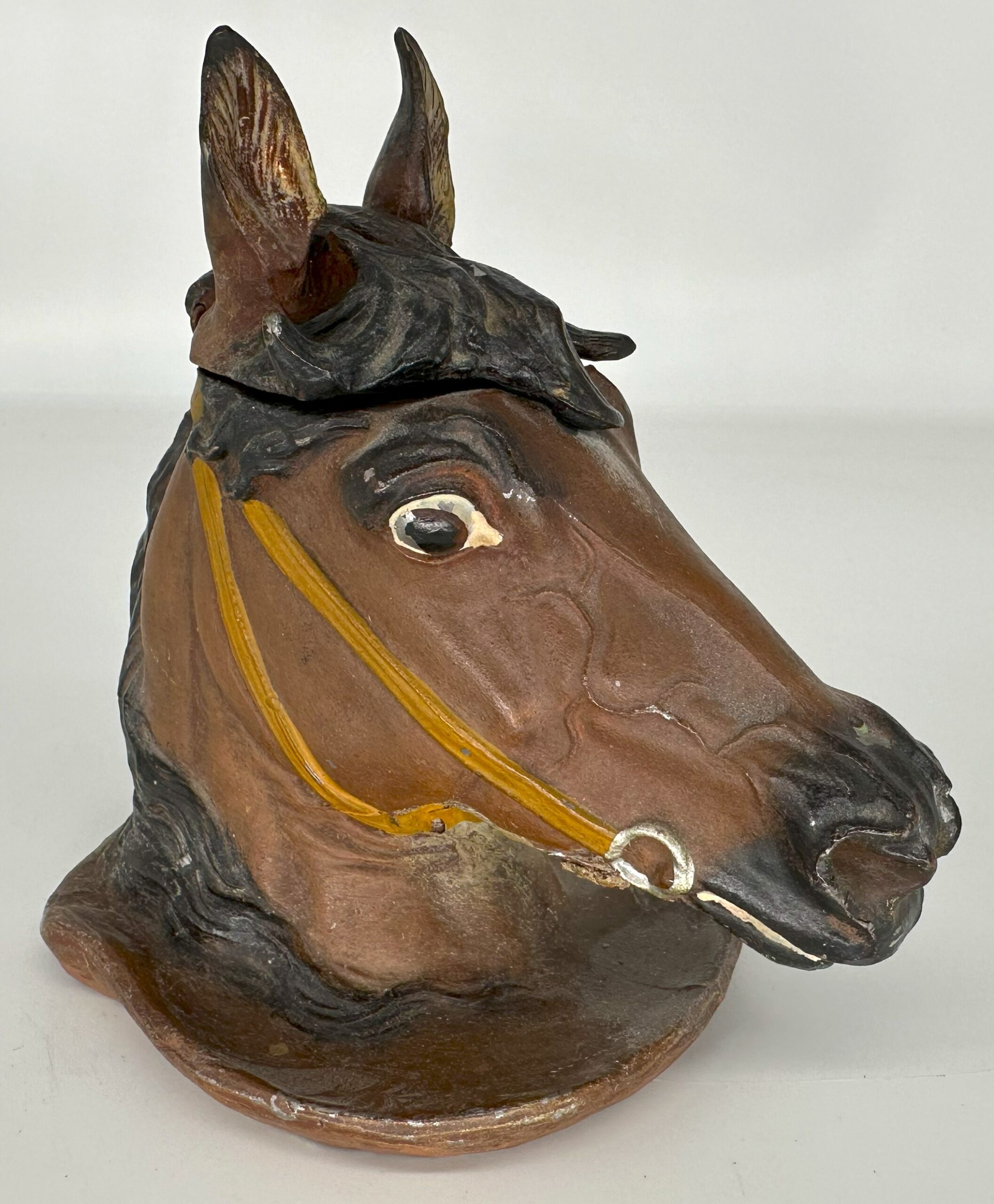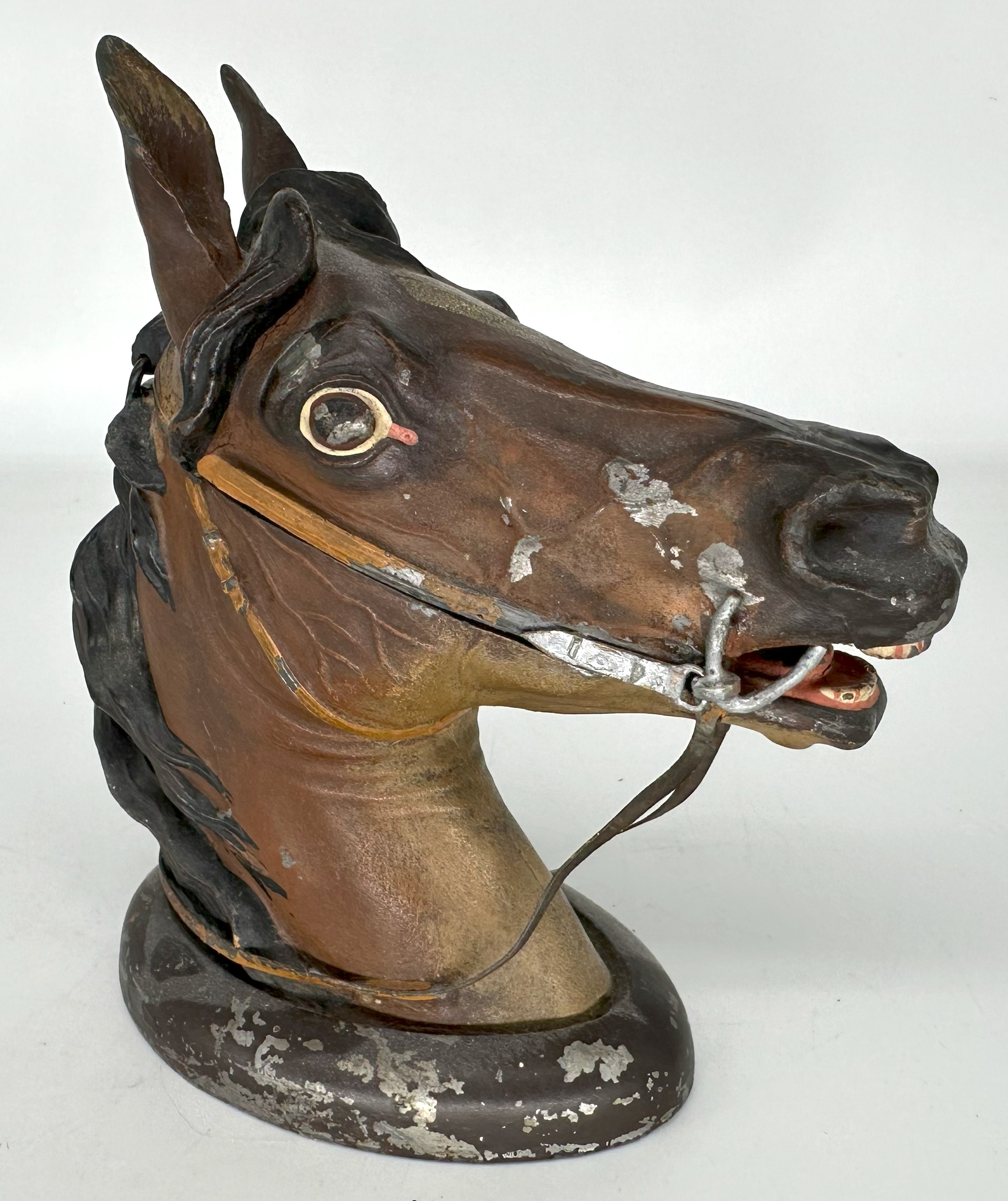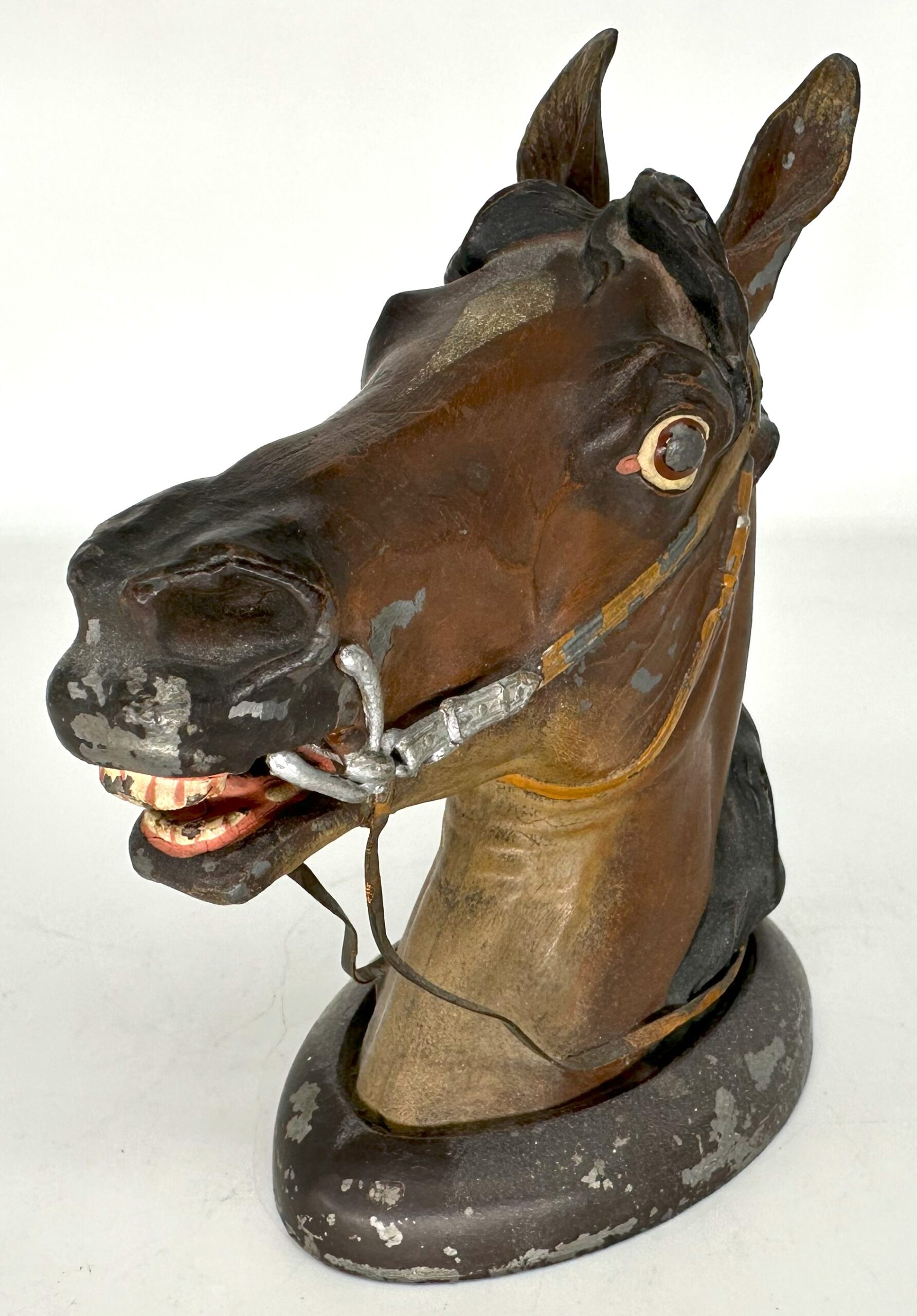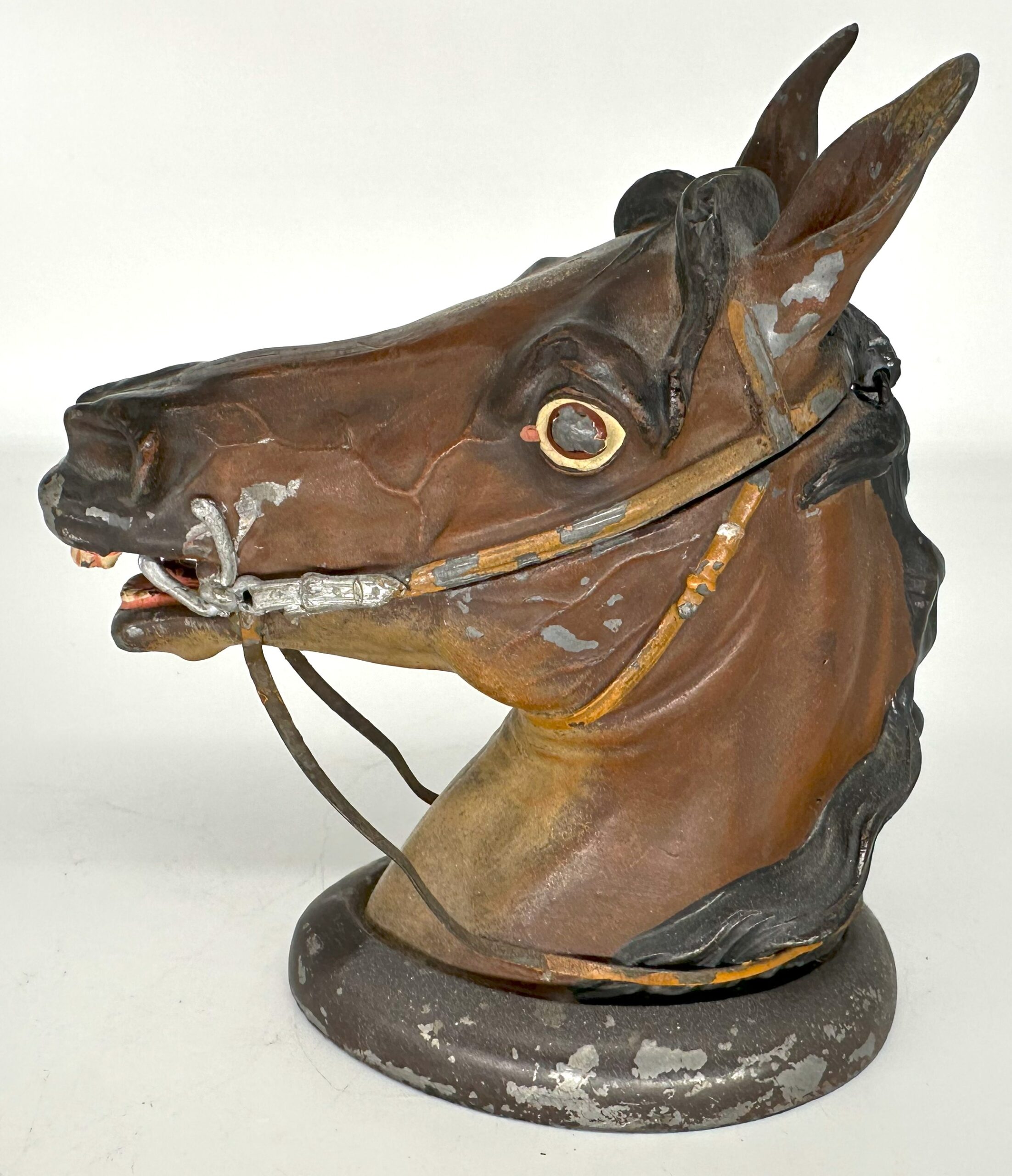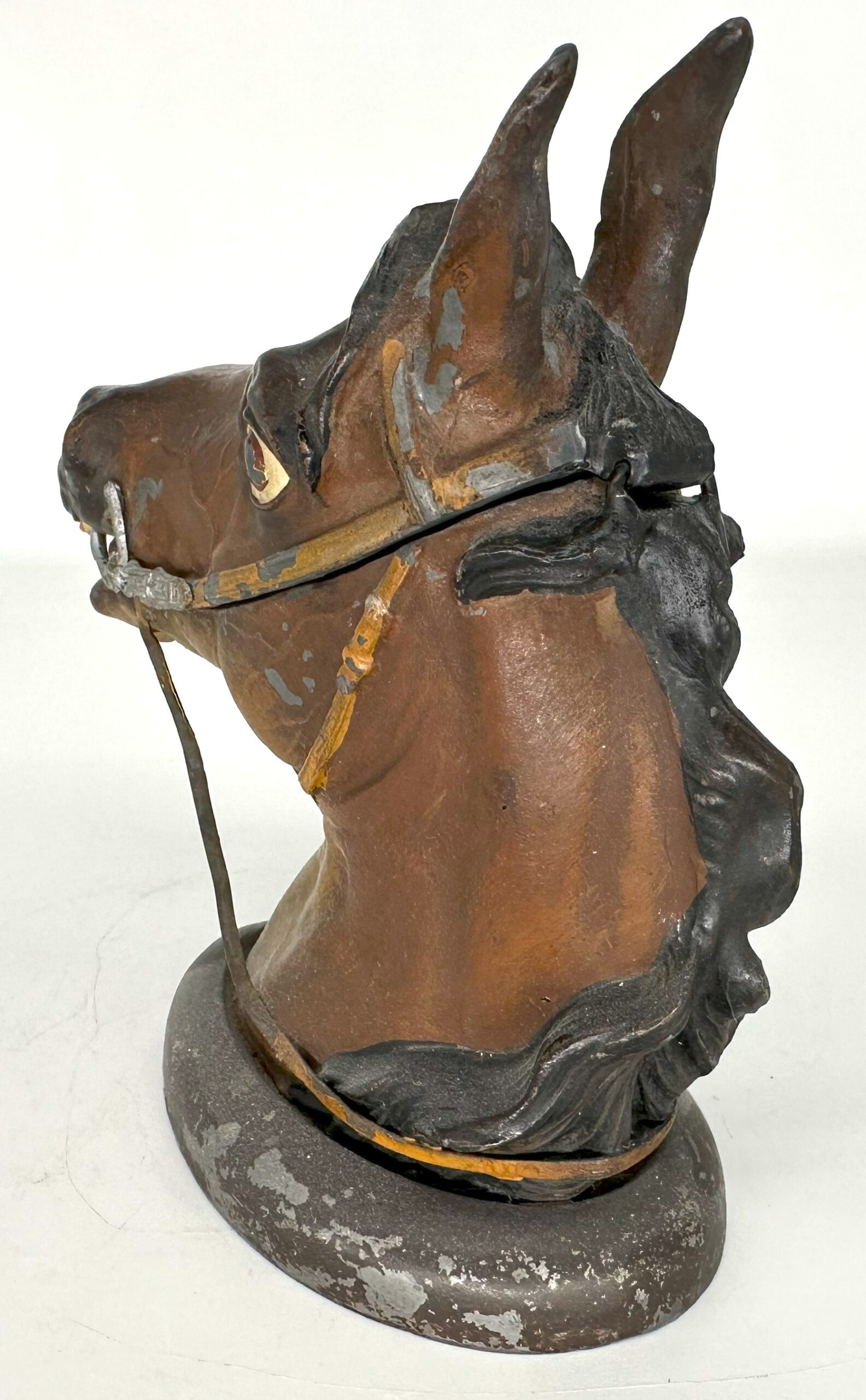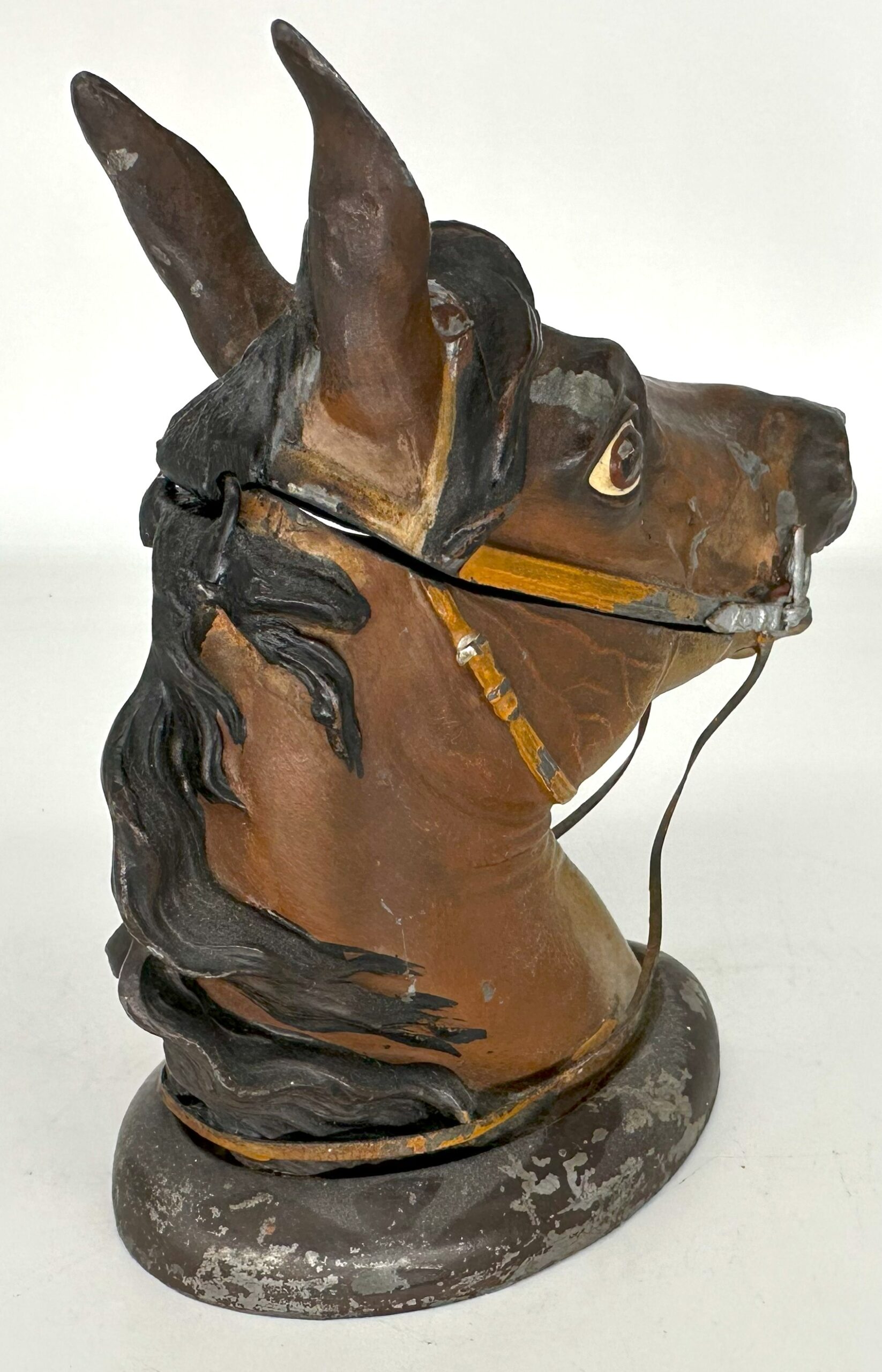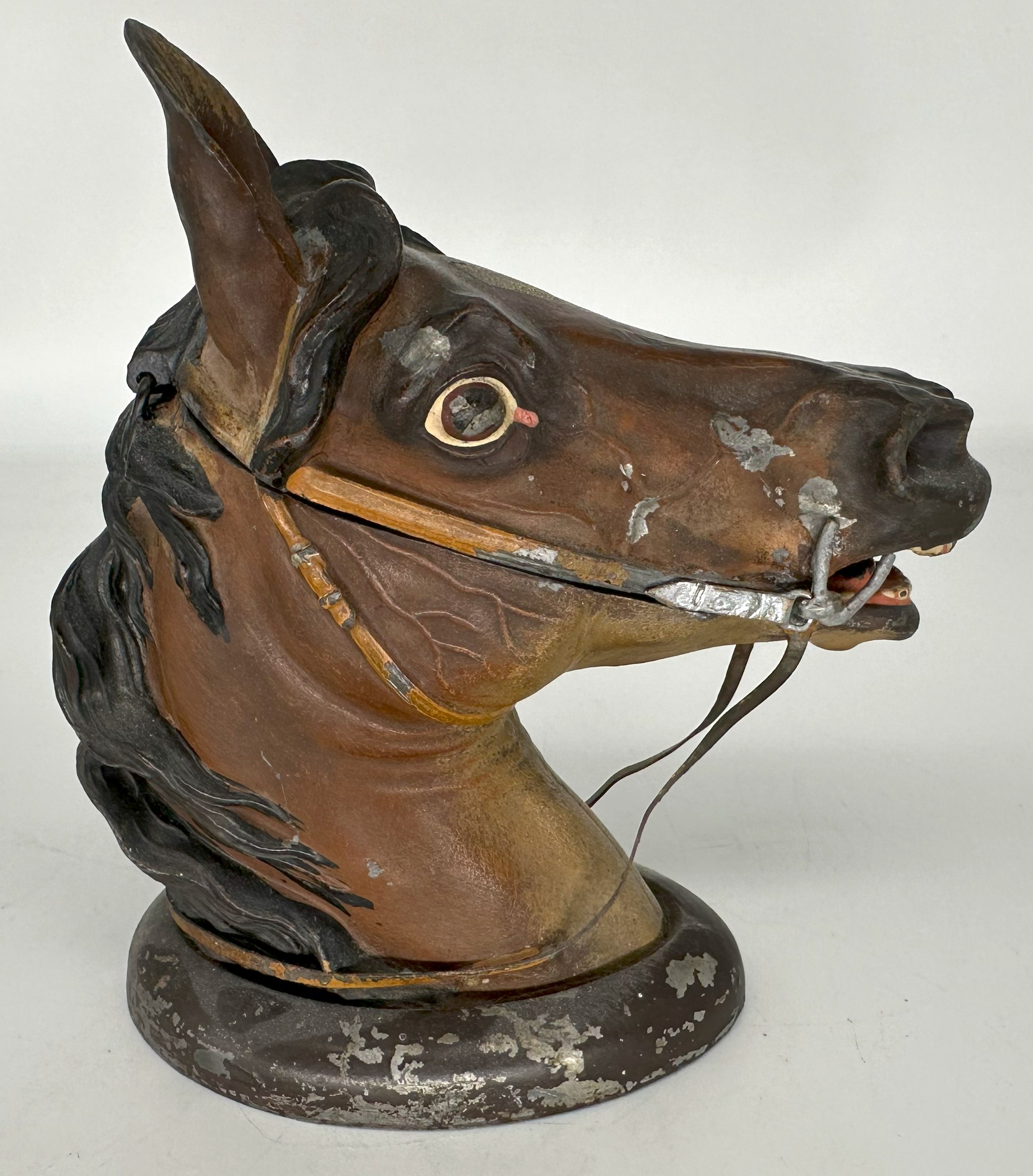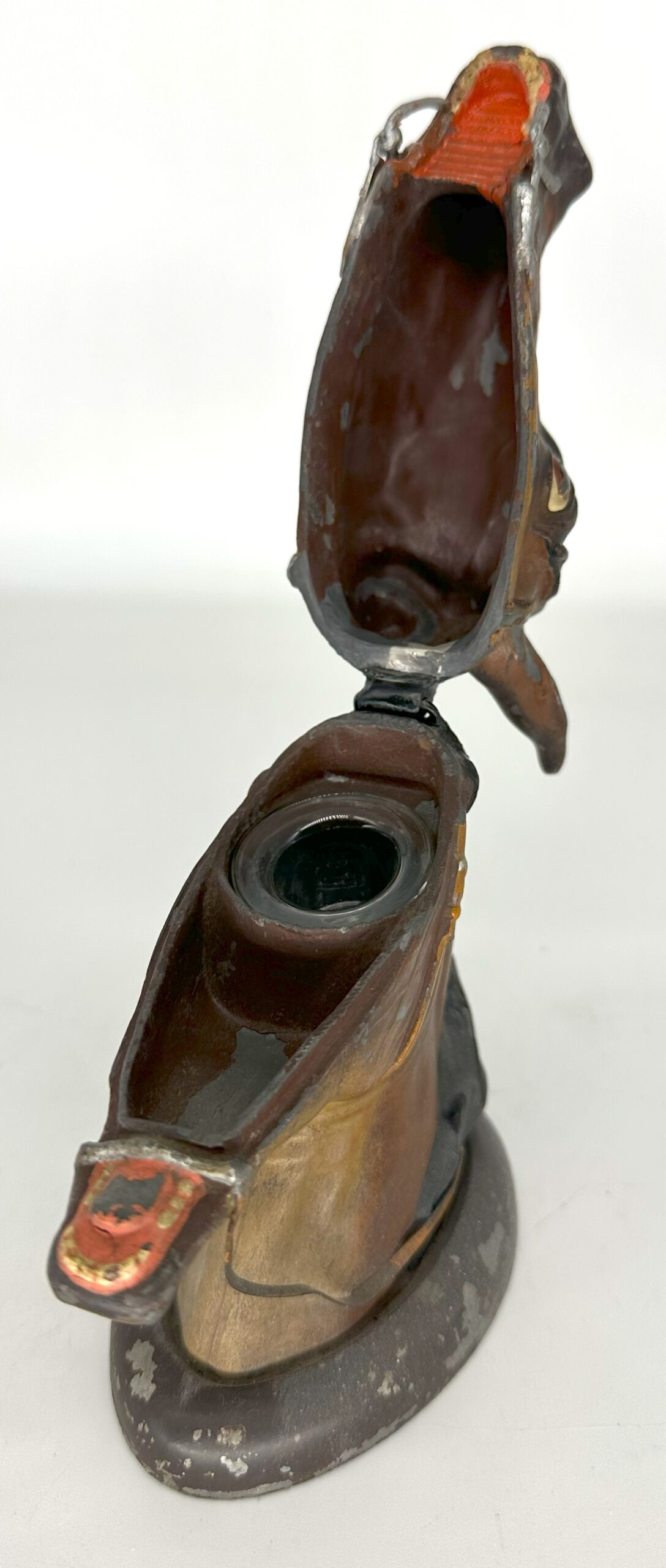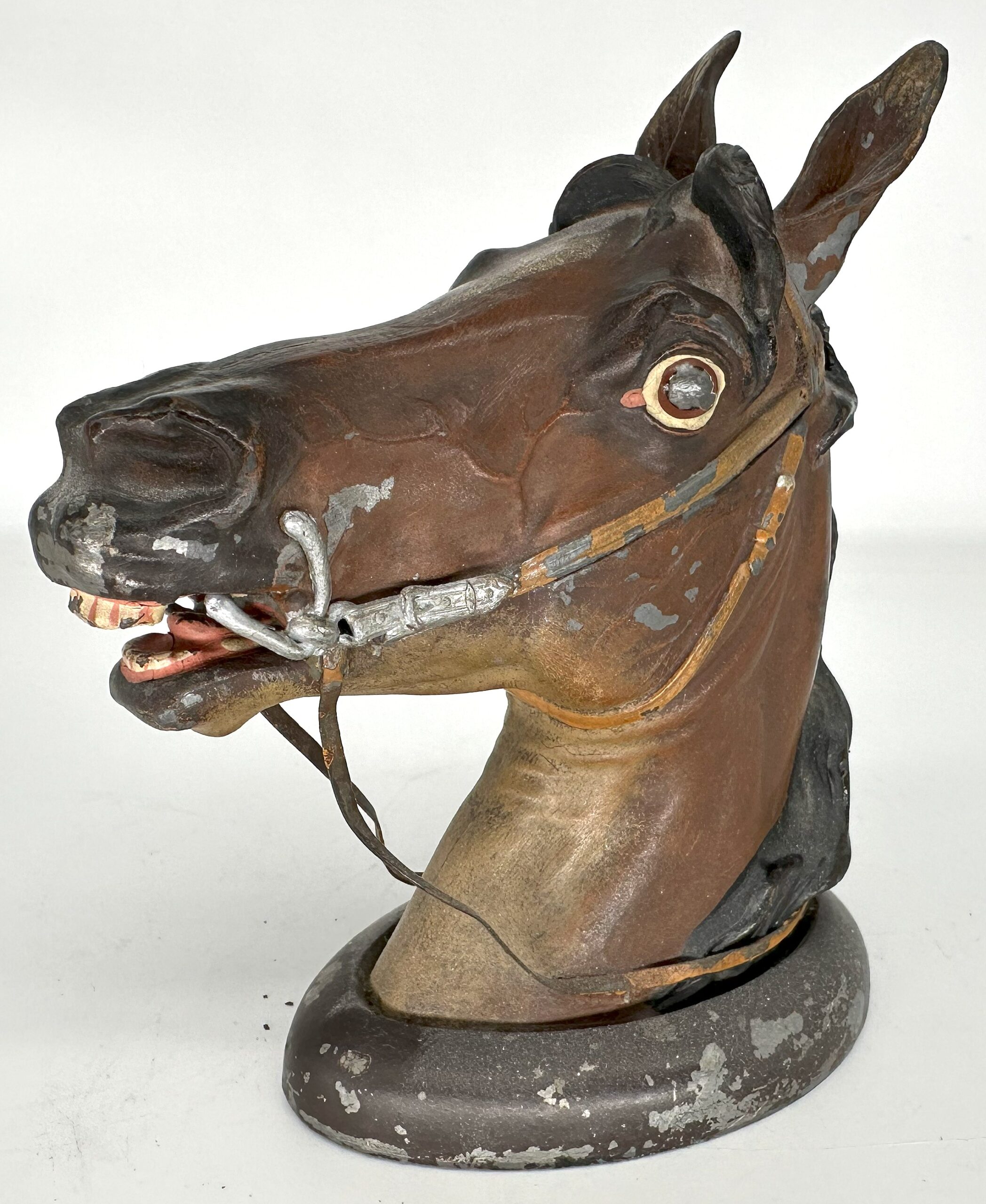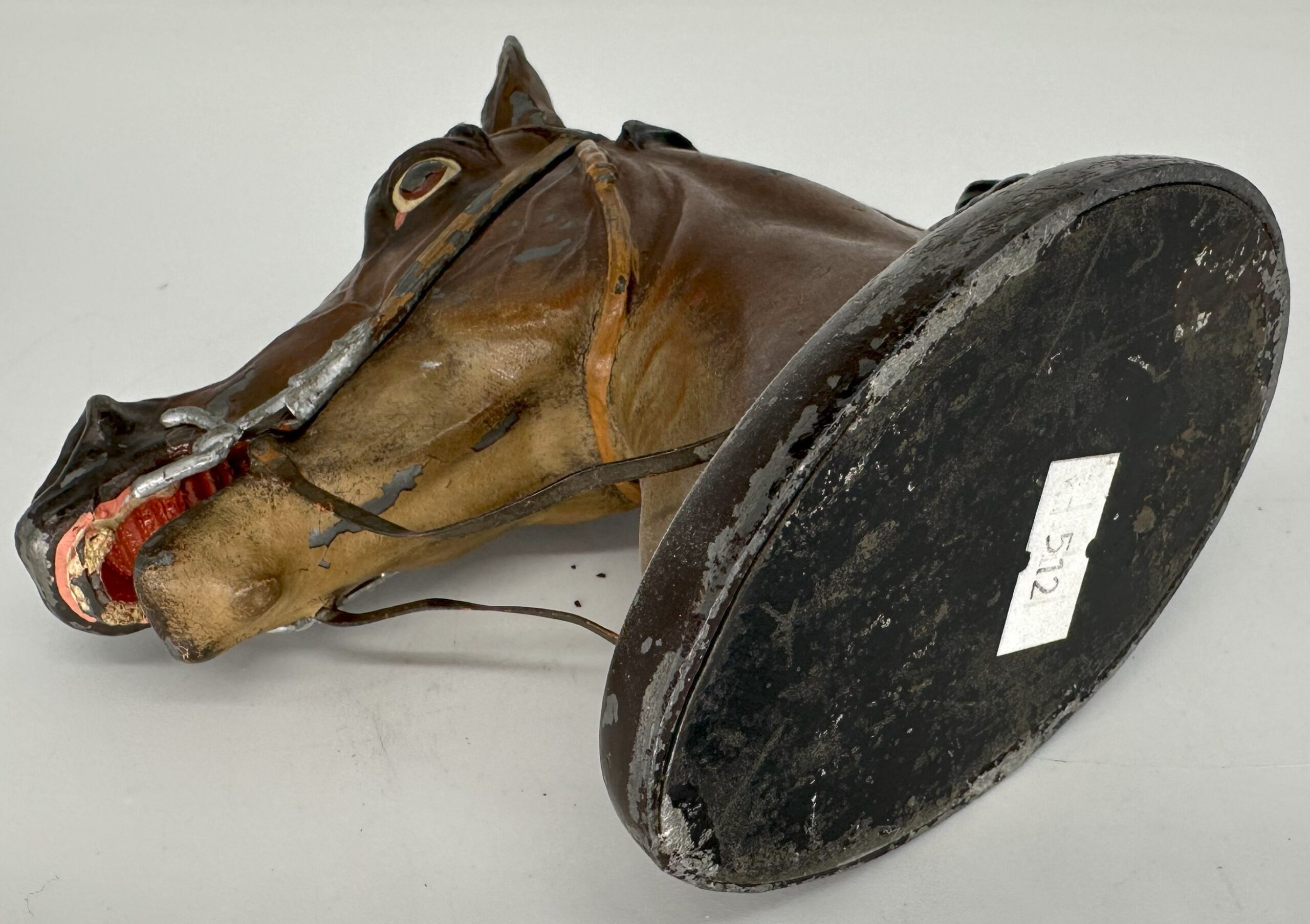
Figural Horse’s Head Inkwell
| Categories | Figural - Animals & Living Creatures |
| Type | Horse |
| Material | White metal |
| Markings | Unmarked |
| Manufacturer | Undetermined |
| Origin | England |
| Date or Era | circa 1890 |
| Measuring | (Example #1: 5 ½” x 3 ½” x 5” high) (Example #2: 4 ½” x 2 ½” x 5 ½” high) |
Two similar examples of a figural inkwell shaped like a horse’s head are pictured. Example #1 is pictured on the left and example #2 is on the right.
Overall Similarities:
- Subject Matter: Both are figural inkwells in the form of a horse’s head.
- Function: Both have a hinged top (the horse’s mane and ears) to access an ink pot.
- Basic Form: Both share a similar overall shape and profile.
- Painted Decoration: Both are hand-painted with similar colors, primarily brown with darker tones for the mane and muzzle.
- Harness Representation: Both feature a painted representation of a harness, including a strap and a ring on the nose band.
Key Differences:
- Material:
- Inkwell 1 (Left): Spelter metal (a zinc alloy)
- Inkwell 2 (Right): White metal, heavier than spelter (likely a different alloy, possibly lead or a higher density white metal)
- Casting Detail:
- Inkwell 1 (Left): Less detailed casting, particularly in the mouth and bridle areas.
- Inkwell 2 (Right): More detailed casting, especially evident in the depiction of the mouth, teeth, bridle, and reins. The teeth are clearly defined, and the bridle and reins show more intricate details.
- Mouth and Teeth:
- Inkwell 1 (Left): Mouth is suggested but not highly detailed. Teeth are not clearly defined.
- Inkwell 2 (Right): Mouth is more realistically depicted, with visible and defined teeth.
- Bridle and Reins:
- Inkwell 1 (Left): Bridle and reins are simplified and represented by painted lines.
- Inkwell 2 (Right): Bridle and reins are more detailed and are three-dimensional, suggesting a more elaborate casting process.
- Base/Neck:
- Inkwell 1 (Left): Base is more rounded and less defined.
- Inkwell 2 (Right): Base/neck is more defined, showing a distinct neck shape.
In Summary:
While both inkwells share the same subject matter and basic function, they differ in their materials, casting detail, and overall finish. The second inkwell (right) shows a higher level of craftsmanship and detail, suggesting a potentially different manufacturer or a higher-quality production process. The differences in material and weight also indicate that they were likely made using different techniques or alloys.
(Example #1 Sold for $259 in February 2014) (Example #2 sold for $255 in February 2025)
Content disclaimer. The information posted is the owner’s best knowledge and may not have been vetted by the SOIC. We welcome comments, corrections, and additions, working to make our website information comprehensive and accurate.
Join the Society of Inkwell Collectors (SOIC) – it’s free!
Founded in 1981 as a non-profit organization,
we are documenting inkwells (and accessories).
We’re here to help and inform!
